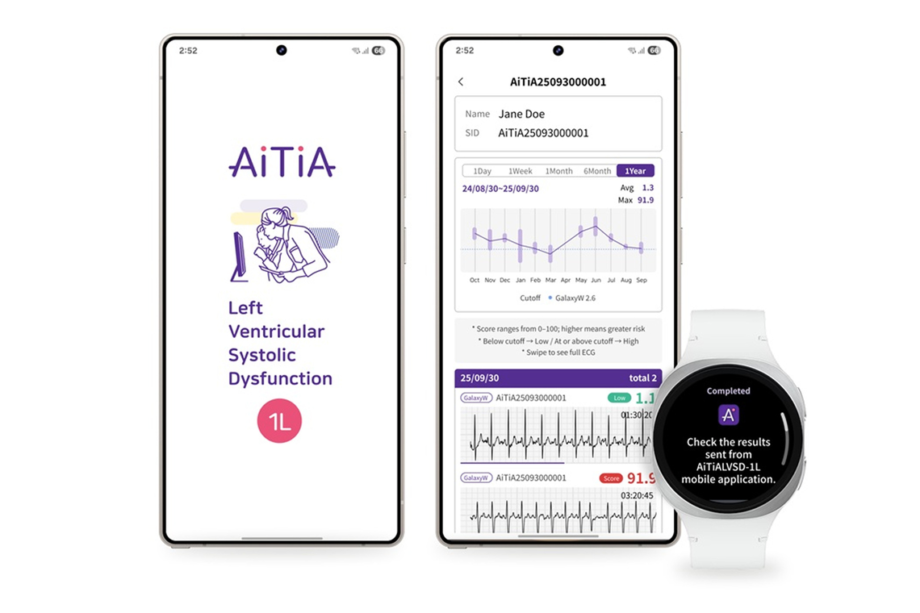Samsung is currently developing wearable technologies that can provide early detection and monitoring of various heart and brain conditions.
Heartbroken no more
In an official note to the media via Samsung’s own newsroom, the Korean company said that it has developed wearable technology that enables the early detection of Left Ventricular Systolic Dysfunction (LVSD).
LVSD is generally understood as the most common type of heart failure, typically represented in popular media as a heart attack, or the culmination of a coronary artery disease, or the result of high blood pressure. In Samsung’s own notes, it said that LSVD is responsible for ~50% of all heart failure.
Note: No, the other 50% isn’t simply “right side failure”. There are various types of heart failure, e.g., diastolic, biventricular, and congestive. If Samsung’s notes are correct, LVSD makes up 50% out of all known types of heart failure.
Another crucial aspect of detecting LVSD early is the survival rate. Per Samsung’s explanation, heart failure has a 50% chance of a 5-year survival rate after a diagnosis. Preventing failure (via lifestyle and other changes) is more ideal than rolling the dice, which is why early detection of LSVD might be beneficial.
Samsung said it collaborated with Medical AI to develop an algorithm based on an existing 12-lead ECG (electrocardiogram) analysis that is widely used in major Korean hospitals. The resulting algorithm is capable of early screening for people who show no signs of LSVD-related heart failure (asymptomatic), in addition to reducing the burden of healthcare loads through preventive care.
What kind of videos do I like? Just read my mind
In a separate endeavour, Samsung partnered with Hanyang University’s Department of Biomedical Engineering to develop an around-the-ear electroencephalogram (EEG) prototype.
An EEG is typically used to monitor the brain’s electrical activity, which can provide medical professionals with the necessary data to diagnose various brain-related conditions, such as the different types of epilepsy, stroke, tumours, brain damage, certain types of brain dysfunctions, inflammation, and some sleep disorders.
Of course, the ear-EEG prototype is far simpler. Samsung said that the research demonstrated the potential for detecting drowsiness onset in real-time.
It was also able to analyse brainwaves, with the ear-EEG able to tell a user’s “video preferences” with 92.68% accuracy. This research was also featured in IEEE Sensors Journal, Volume 23, Issue 18. Samsung did not specify the type of videos shown to its test subjects in the course of research.
Availability
These new technologies are still in development. Samsung did not state whether any of these applications will be implemented in its existing or future wearables, but it will continue to research and develop more technologies for health-positive outcomes.
Source: Samsung (newsroom)







